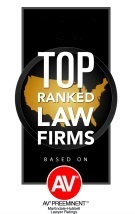Property Tax Update: Proposition 15
Author: Rebecca L. Van Loon
Updated: 7/22/2020
On November 3, 2020, Proposition 15 will be on the California general election ballot. Below is a summary of Proposition 15 and the resulting property tax implications. Generally, Proposition 15 introduces a “split roll” property tax regime requiring the reassessment of commercial and industrial real properties at current market value beginning as early as the 2022-2023 tax year and periodic reassessment thereafter.
Current Law
The California Constitution currently provides real property tax cannot exceed one percent (1%) (plus voter approved bonds) of the “full cash value” of a property. The “full cash value” for property is initially fair market value of the property when purchased or change in ownership occurs. After acquisition, the “full cash value” can only increase by a maximum of two percent (2%) each year (or reduced if fair market value is less than the assessed value in certain circumstances). As a result, the assessed value of a property may be much lower than the current market value.
Real property will not be reassessed to fair market value unless there is new construction (some exceptions) or upon another “change in ownership.” A change in ownership generally occurs upon transfer of real property (including sale, gift, inheritance, or change in beneficial ownership) or upon a change in control of an entity (LLC, corporation, partnership, etc) holding real property.[1] There are a number of transfers which are excluded as a change in ownership, including, but not limited to, transfers to spouses, transfers of a personal residence and other properties up to $1 million of assessed value between parents and children, transfers to grandchildren under certain circumstances, transfers to co-owners/co-occupants, and proportional interest transfers.
For example, if real property is purchased for $450,000, the purchase price will normally establish the “full cash value” of the property for property tax purposes. If in three years, the fair market value of the property appreciates to $600,000, the “full cash value” of the property remains at $450,000 (plus up to 2% annual adjustments). If the property is gifted to a child five years later when the fair market value is $700,000 (and the proper exclusion forms are filed timely and accepted by the assessor’s office), the “full cash value” of the property will remain $450,000 (plus up to 2% annual adjustments) in the hands of the child. In contrast, if the property were gifted to a sibling, a change in ownership will have occurred and the “full cash value” would be increased to $700,000 (market value) at the time of the transfer, resulting in increased annual property taxes.
Currently, the above property tax rules apply to all real property, regardless of zoning, use, or purpose.
**Note of Caution: Although income tax deferral may be available for taxpayers transferring property as an income tax deferred exchange under Internal Revenue Code section 1031, there is no such deferral available for property tax and a reassessment may occur.
Proposition 15
Proposition 15 would amend the California Constitution with respect to the determination of “full cash value” for commercial and industrial real properties. Commercial or industrial properties would no longer be subject to the reassessment laws outlined above and would instead be reassessed to market value and periodically thereafter without requiring any change in ownership.
For example, under the current property tax rules a commercial property with an assessed value of $500,000 and a fair market value of $1 million would continue to be subject to property tax at $500,000 (plus up to 2% annual adjustments) until a change in ownership. Under Proposition 15, the commercial property would be reassessed currently to market value and the new property tax base value would be $1 million (approximately doubling the property tax liability of the property owner in this example).
Key Changes and Definitions
- Current Reassessment of Commercial/Industrial Properties. Proposition 15 impacts taxable “commercial and industrial real property,” which is defined as real property used as commercial or industrial property and vacant land not zoned for residential use and not used for commercial agricultural production. Under Proposition 15, such properties would be reassessed to current market value beginning as early as 2022-23 fiscal year.
- Partial Reassessment of Mixed-Use Properties. “Mixed-Use” property on which both residential and commercial/industrial uses are permitted would also be impacted. However, only the portion of the property used for commercial or industrial purposes would be subject to current reassessment described above.
- Periodic Reassessment. Following the current reassessment, Proposition 15 would require the periodic reassessment of such properties to current market value not less frequently than every three years.
- No Tax Rate Increase. Proposition 15 would maintain the 1% limitation on property tax rates (plus voter approved bonds) for all taxable real property, including commercial and industrial real property.
- Reassessment Phase-In. The proposed current reassessment would be phased-in to allow assessors to effectively implement the law beginning with fiscal tax year 2022-23 fiscal year and occur over several years.
- Reasonable Time to Pay. Any property owner affected by Proposition 15 would be obligated to pay property tax based on the new assessed value beginning with the lien date after reassessment is completed and be given a reasonable time to pay the increased property tax liability.
- Business Tangible Personal Property Tax. Under Proposition 15, the business tangible personal property tax on equipment and fixtures would be eliminated for “small businesses” (requires annual certification). For all other businesses, there would be a $500,000 per year exemption of combined tangible personal property and fixtures, per taxpayer. The proposed exemption/limitation would not apply to aircrafts or vessels.
Exclusions
Proposition 15 specifies a number of real properties that would be excluded from the current reassessment to market value and would remain subject to the current property tax regime. Excluded properties include:
- Personal residence
- Residential rental real property, including:
- single-family homes
- multi-unit structures
- vacant land on which a single-family home or multi-unit structure may be constructed or placed
- property zoned as commercial or industrial but used as a long-term residential property
- Mixed-Use Property
- the portion of the mixed-use property not used for commercial/industrial purposes
- limited commercial uses of residential property (home offices, home-based businesses, and short-term rentals)
- complete exclusion for mixed-use property where 75% or more of the property by square footage or value is residential
- Agricultural Property (land used for producing commercial agricultural commodities)
- Small Property
- commercial or industrial real property with a fair market value of less than $3 million and no direct/indirect owner of such property holds other commercial/industrial real property with an aggregate market value of more than $3 million
- small property exclusion must be claimed annually or any time there is a change in the direct/indirect beneficial ownership of the property
Deferral
Some property owners affected by Proposition 15 may be able to defer the current reassessment until 2025-2026 lien date. Property owners that may qualify for the deferred reassessment must meet the following requirements:
- Properties in which “small businesses” account for 50% or more of the occupied space by square footage
- Requires annual certification or any time there is a change in the direct/indirect beneficial ownership of the property
- “Small Business” is any business meeting all of the following requirements:
- less than 50 annual full-time equivalent employees;
- business is independently owned and operated; and
- business owns real property located in California[2]
Vote Threshold to Pass
Under Article XIII A, Section 3, subparagraph (a) of the California Constitution, the State Legislature is prohibited from adding or increasing property taxes, which would otherwise require an act to be passed by two-thirds (2/3) of the legislators from each house. As a proposition to amend the California Constitution, Proposition 15 can be passed by a simple majority vote.
Resources
https://www.sos.ca.gov/elections/ballot-measures/qualified-ballot-measures/
http://cal-access.sos.ca.gov/Campaign/Measures/Detail.aspx?id=1422117&session=2019
***The information provided in this article is for informational purposes only and not for the purpose of providing legal advice. You should contact your attorney to obtain advice with respect to any particular issue or problem.***
[1] Change in Control of an entity generally occurs upon a transfer of an ownership interest in the entity that results in another party obtaining control or more than 50% of the ownership interest in the entity. For example, A holds 30%, B holds 15%, and C holds 55% of an LLC, which holds real property. If B transfers his 15% ownership interest to C, there is no change in control because C already owned more than 50% in the LLC prior to the transfer. However, if C transferred 40% of his interest to A, then a change in control will have occurred because after the transfer A will have obtained more than 50% of the ownership interest in the LLC. As a result, the real property held by the LLC will be reassessed. A change in control may also occur upon the transfer of more than 50% of the original co-ownership interest in the entity.
[2] The requirement of a “small business” to own real property in California may conflict with the deferral for property owners in which small businesses “occupy” the subject commercial or industrial real property as a tenant or lessee. Such conflict may need to be corrected or clarified.


